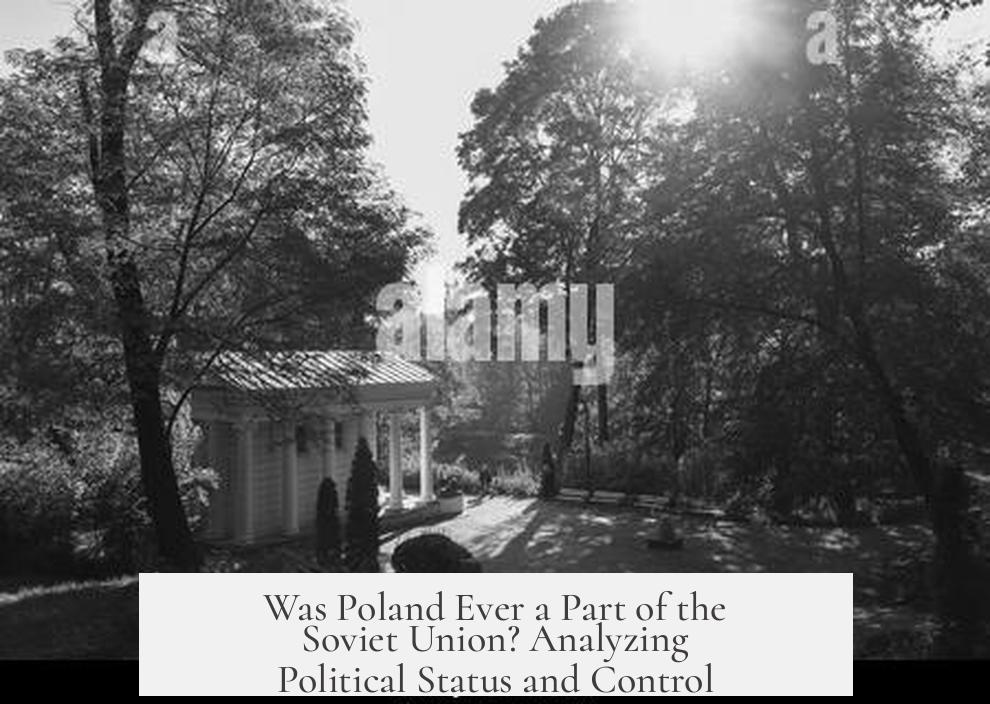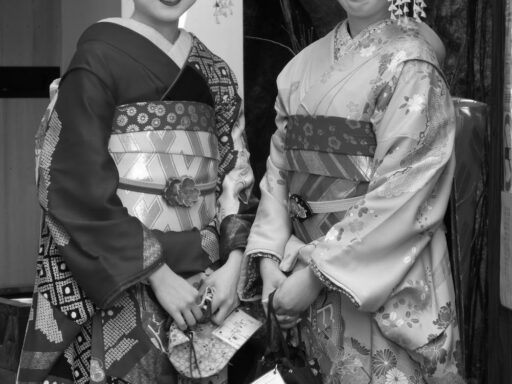It is not fair to say Poland was part of the Soviet Union. Poland was an independent country during the Cold War, allied closely with the USSR but never a constituent republic of the Soviet Union. Poland had its own government, constitution, and communist party, even though it fell under strong Soviet influence and control.
The Soviet Union was a specific political entity formed by a union of fifteen Soviet Socialist Republics (SSRs). Each SSR had constitutional recognition within the USSR’s borders. The largest was the Russian Soviet Federal Socialist Republic, but others like Ukraine and Belarus were also formal republics. Poland never became one of these republics and thus was not a member of the USSR.
During the period roughly from 1945 to 1989, Poland existed as an officially sovereign state. It was part of a military alliance known as the Warsaw Pact, established to unify Eastern European communist states under Soviet leadership. These countries, including Poland, Czechoslovakia, East Germany, Hungary, Bulgaria, and Romania, were allies of the USSR but retained formal independence.
- Poland’s ruling party was the Polish United Workers Party (PZPR), a communist organization installed by the Soviet Union after World War II.
- Leaders who opposed Stalinist or Bolshevik policies were removed or exiled to ensure pro-Soviet governments.
- Despite Soviet-imposed leadership, these parties operated somewhat autonomously within their own nations.
The Soviet Union exerted significant influence over Poland’s policies, military, and governance. Soviet monitoring was intense, resembling a vassal-client relationship. For example, Warsaw Pact leaders would respond directly to calls from Soviet leadership and follow their directives closely. The Red Army maintained a military presence in Poland, especially during moments of unrest, underscoring Soviet dominance.
However, Poland’s state structures, borders, and citizenship remained distinct from those of the Soviet Union. Unlike Soviet republics, Poland was not governed by the Communist Party of the Soviet Union (CPSU). Instead, it had its own communist party reflecting local control, albeit under Soviet supervision.
Historical comparisons highlight Poland’s separate status. Yugoslavia and China, for instance, pursued largely independent paths, resisting Soviet control over their internal and foreign policies. Poland’s case falls in between these and the formal Soviet republics since it was neither fully independent in decision-making nor incorporated into the USSR.
The Soviet Union also intervened militarily in other Warsaw Pact countries when local governments attempted reforms that challenged Moscow’s control. In 1956, Soviet forces crushed Hungary’s uprising, and in 1968, they invaded Czechoslovakia to halt liberal reforms. Poland experienced a similar dynamic, facing pressure to align completely with Soviet policies.
| Aspect | Poland | Soviet Union |
|---|---|---|
| State Status | Independent country | Union of 15 SSRs |
| Party Control | Polish United Workers Party | Communist Party of the Soviet Union |
| Military Presence | Red Army occupation | Red Army based in USSR and Warsaw Pact |
| Constitutional Membership | No | Yes |
In conclusion, Poland’s relationship with the Soviet Union was one of alliance under heavy influence, rather than formal integration. It remained a separate state, governed domestically by its own communist party but under Soviet oversight. Therefore, describing Poland as part of the Soviet Union is inaccurate. Instead, it is most accurate to describe Poland as a Soviet satellite state or client ally during the Cold War.
- Poland was never a Soviet Socialist Republic within the USSR.
- It had an independent government and communist party installed under Soviet influence.
- Poland was part of the Warsaw Pact, an alliance dominated by the USSR.
- The country endured Soviet military occupation and political control.
- Poland maintained separate statehood and sovereignty throughout the Cold War.
Is it Fair to Say Poland Was Part of the Soviet Union?
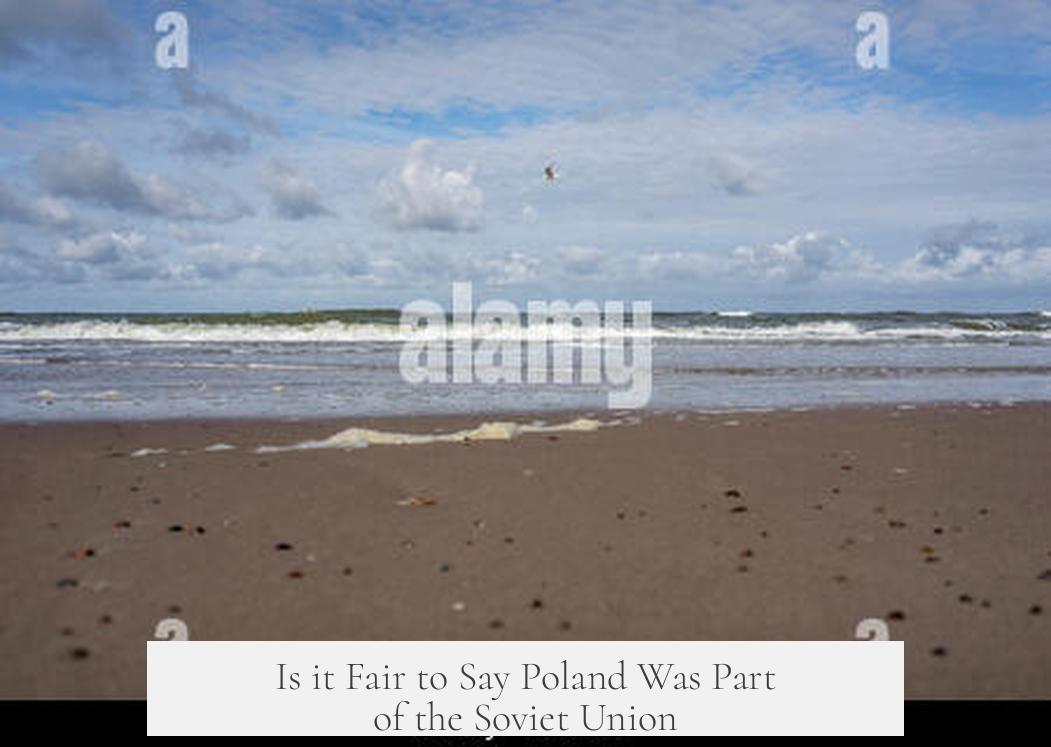
Short answer: No, Poland was never officially part of the Soviet Union.
Let’s unpack that a bit, because this topic trips up a lot of folks who remember Cold War history from movies or overheard conversations at family dinners. Poland did have a close and complicated relationship with the USSR, but calling it a Soviet republic would be like calling a houseguest the owner of your home. They stayed, influenced everything, and sometimes left their mark — but the house was still yours.
Understanding the Soviet Union’s Structure First
The USSR was a union of 15 specific Soviet Socialist Republics (SSRs), each formally recognized in the Soviet constitution. Think of these as states within a country — except far more controlled by a central Communist Party centered in Moscow.
Among those 15 republics, Russia (officially the Russian Soviet Federal Socialist Republic) was the largest. The others included Ukraine, Belarus, the Baltic States, and several Caucasus and Central Asian republics. All had representatives in the USSR government, used the Soviet constitution as their legal framework, and were directly governed by the Communist Party of the Soviet Union (CPSU).
Crucially, Poland was not one of these republics. It didn’t have a Soviet constitution or Soviet borders. Poland remained a country separate from the USSR in these fundamental ways.
Poland’s Official Political Status During the Cold War
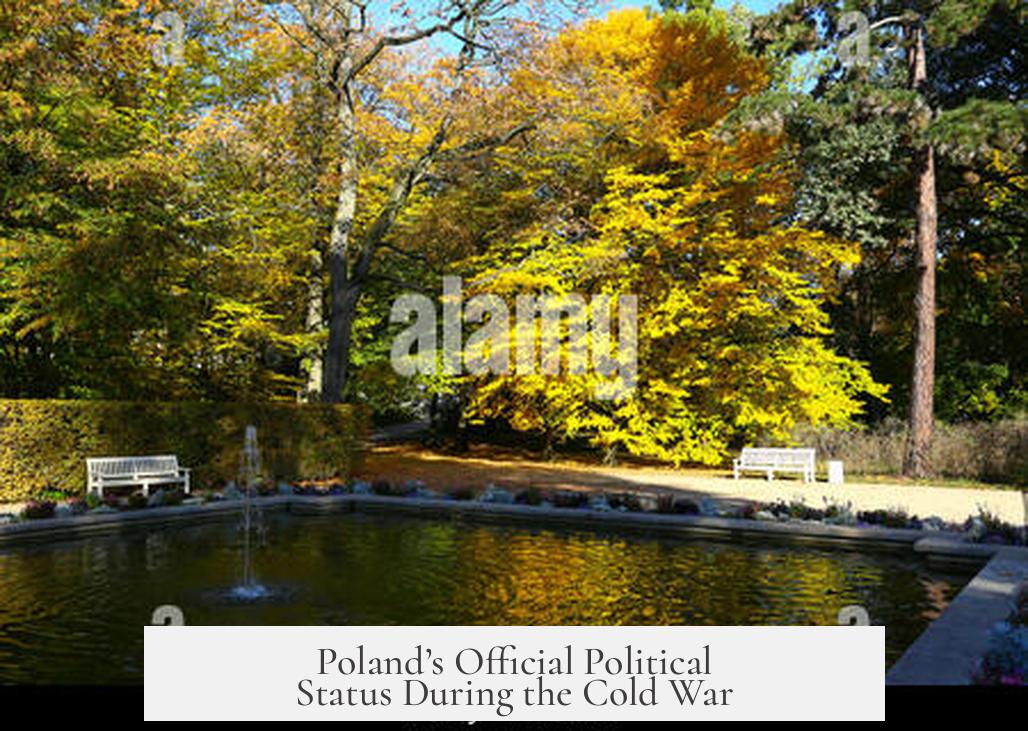
During the Cold War — roughly 1953 to 1989/90 — Poland was officially an independent country. At the time, it was part of the Warsaw Pact, a military alliance headed by the USSR. But attending the club doesn’t mean you live in the club’s house.
Poland’s government was controlled by the Polish United Workers Party (PZPR), a communist party installed after World War II when the Red Army occupied the country. So basically, the Soviets handpicked Poland’s leaders, ensuring friendly and compliant governance. But these leaders weren’t puppets strung on a Soviet stage—they managed their own domestic policies to some extent.
This setup is different from Poland being part of the Soviet Union. It’s more like Poland was a “vassal state,” or a “client kingdom,” deeply influenced and watched closely by Moscow but still wearing its own national jersey.
The Soviet Grip on Poland Was Real — But Not Total
Warsaw Pact members were monitored closely by the USSR. The KGB sent spies to watch over allies, like Vladimir Putin’s early work spying on East Germany. When the USSR’s leadership called on Warsaw Pact leaders like Poland’s, the calls were rarely declined.
But calling Poland a Soviet republic would stretch the truth. While Poland echoed Moscow on many things, it never legally joined the club as a full member. It held its own parliament, government, and maintained separate international status—even if the West didn’t see it as “free.”
Military Interventions Show the Line of Control
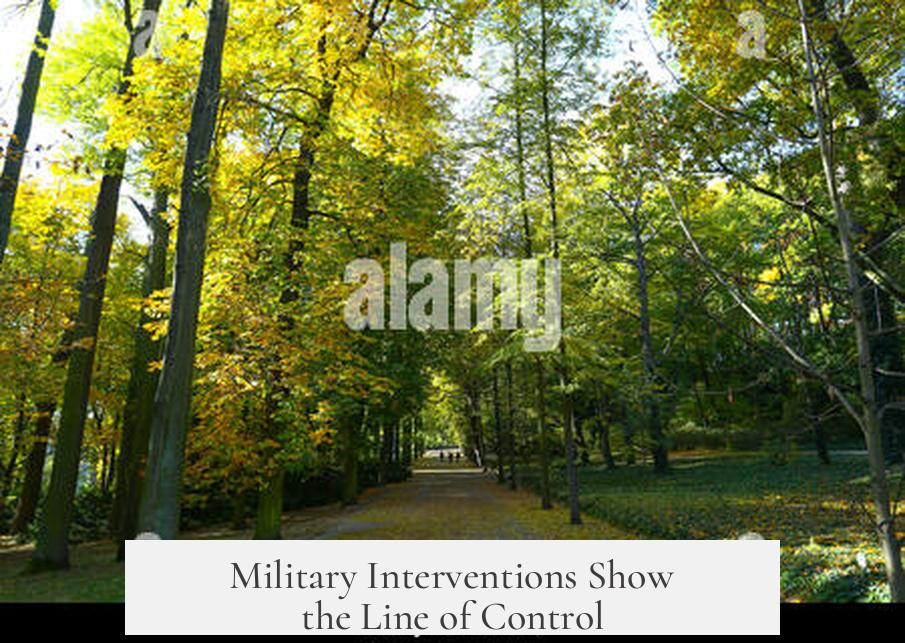
History also shows the limits of Poland’s autonomy. When Hungary in 1956 and Czechoslovakia in 1968 tried loosening Soviet-style controls, Soviet tanks rolled in to tighten the screws once again. Poland itself experienced waves of Soviet military influence if needed.
These events highlight the USSR’s willingness to exert direct military force to keep Warsaw Pact countries in line. But even then, Poland was not annexed as a Soviet republic; rather, it was coerced into compliance while keeping its formal independence.
How Poland Compared with Other Communist Neighbors
Look at Yugoslavia and China during the same period. Both distanced themselves from Moscow, running their own policies and foreign affairs. This irritated the Soviets, who couldn’t control every communist country.
Poland, however, stayed firmly in the Soviet “camp.” It wasn’t free like these countries but always maintained a separate identity from the USSR itself.
So, How Do We Sum This Up?

Poland was a Soviet ally, functionally a vassal or client state, ruled by a Soviet-installed communist party, and sometimes occupied by the Red Army. But it was always a separate, sovereign country—not part of the Soviet Union.
If someone says, “Poland was part of the USSR,” you can think of it like this: Poland was a guest in the Soviet home who followed the house rules, paid rent, and had no real say in the landlord’s decisions—but the landlord never claimed the guest’s room as their own.
Why Does This Matter?
Understanding these distinctions helps clear up common historical confusions. It allows us to appreciate the nuance of Cold War geopolitics without oversimplification.
Knowing Poland’s status is critical to grasping the nature of Soviet control versus outright annexation. It also sheds light on Poland’s unique path to regaining full freedom in 1989-90 compared with the former Soviet republics, which dissolved themselves from within.
Final Thoughts: Was Poland Part of the Soviet Union?
No, it wasn’t. Yet Poland’s journey during the Cold War was deeply shaped by the USSR’s shadow. It remained sovereign in law but a Soviet satellite in practice—closely watched, heavily influenced, but never fully absorbed.
That difference matters. It shapes Poland’s national identity today, its political history, and how we read the Cold War story. So next time someone asks you if Poland was in the Soviet Union, you’re armed with the facts to say, “Not quite—but it was a guest who outstayed its welcome in many ways!”
Was Poland ever officially part of the Soviet Union?
No, Poland was never officially one of the Soviet Union’s republics. It remained an independent country under the Warsaw Pact alliance but was not constitutionally part of the USSR.
How did Soviet control affect Poland’s government?
The Soviet Union installed communist leaders in Poland after World War II. Poland had its own communist party that governed domestically, but it closely followed Soviet directives, making Poland a client state.
Did Poland have full independence during the Cold War?
Poland was officially independent but heavily influenced by the USSR. Its government was Soviet-aligned, and it faced military pressure to stay within Moscow’s policies, limiting true autonomy.
How did Poland’s status compare to other communist countries?
Unlike Yugoslavia or China, which operated with more independence, Poland was firmly within the Soviet sphere and closely monitored. Deviation from Soviet policies risked intervention.
What role did the Red Army play in Poland?
The Red Army occupied Poland after WWII and was a tool of Soviet control. While Poland was sovereign, Soviet military presence ensured obedience to Moscow’s line throughout the Cold War.

